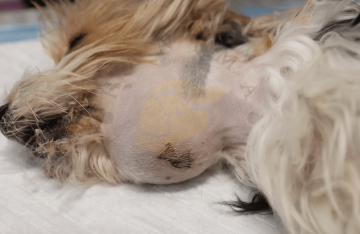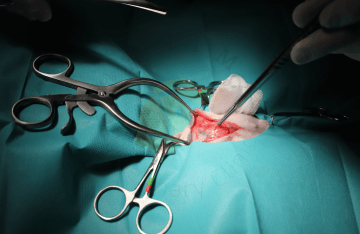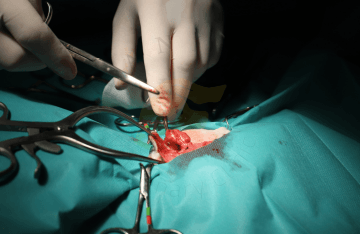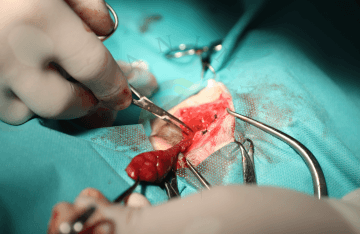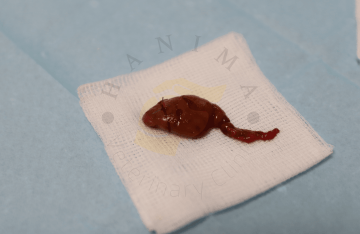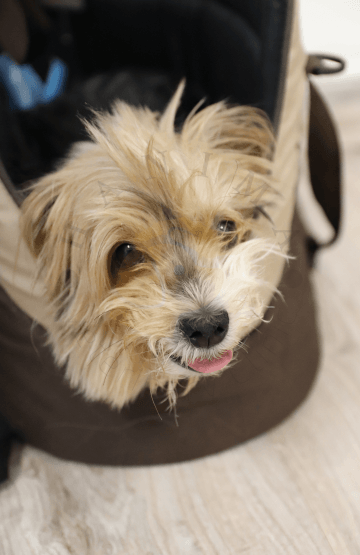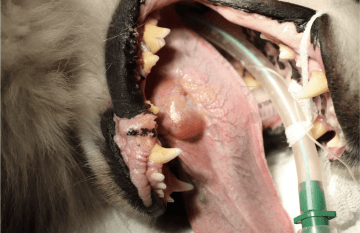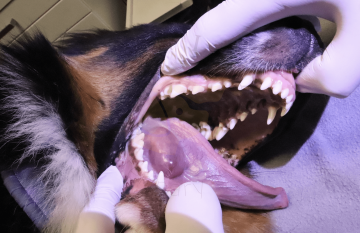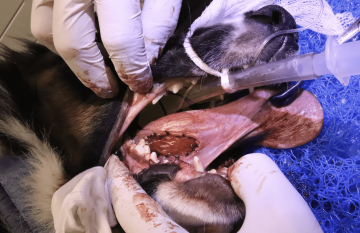Sialocele
Professional Dental Consultation
The first step before any dental procedure with us is always a professional dental consultation, also known as a dental examination. Without this, we are unable to determine the type, extent, or cost of the necessary dental or dental surgical procedure. We strive to approach our clients transparently to ensure that it is entirely clear what needs to be done and how much it will cost.
The price for a professional dental consultation is 940 CZK.
What is Sialocele?
A sialocele, also known as a salivary cyst, is a pathological condition in dogs where saliva accumulates outside the salivary glands or their ducts. This accumulation creates a soft, often painful swelling that can be located in the neck area, under the tongue (known as a ranula), or near the lower jaw.
Why Does Sialocele Occur?
Sialocele usually occurs due to injury or inflammation of the salivary glands or their ducts. It can be caused by trauma such as bites, impacts, or surgical procedures. Infections or obstructions of the salivary gland ducts can also lead to the formation of a sialocele. Sometimes, the exact cause remains unidentified.
How Does Sialocele Manifest?
Dogs with sialocele may have a visible swelling in the neck area or under the tongue, which is soft to the touch and may increase in size. The swelling can be painful, and affected dogs might show reluctance to eat, have difficulty swallowing, or exhibit increased drooling. A ranula, which is a sialocele under the tongue, can cause breathing difficulties or significant discomfort when eating and drinking.
What is the Treatment for Sialocele?
Treatment of sialocele is primarily surgical, aiming to eliminate the source of the problem and prevent further accumulation of saliva.
Excision of the Salivary Gland: One of the most common solutions is the surgical removal of the affected salivary gland (usually the mandibular and sublingual glands). This procedure prevents further leakage of saliva and the formation of a sialocele.
Marsupialization: Marsupialization is another surgical technique, particularly used for ranulas. During this procedure, a permanent opening is created to allow the saliva to drain freely into the oral cavity, preventing its accumulation and the formation of a cyst. This method can be appropriate when gland removal is complicated or when a less invasive solution is preferred.
After surgery, it is crucial to monitor the dog to ensure there is no recurrence or complications. Early diagnosis and treatment are key to successfully addressing sialocele.

